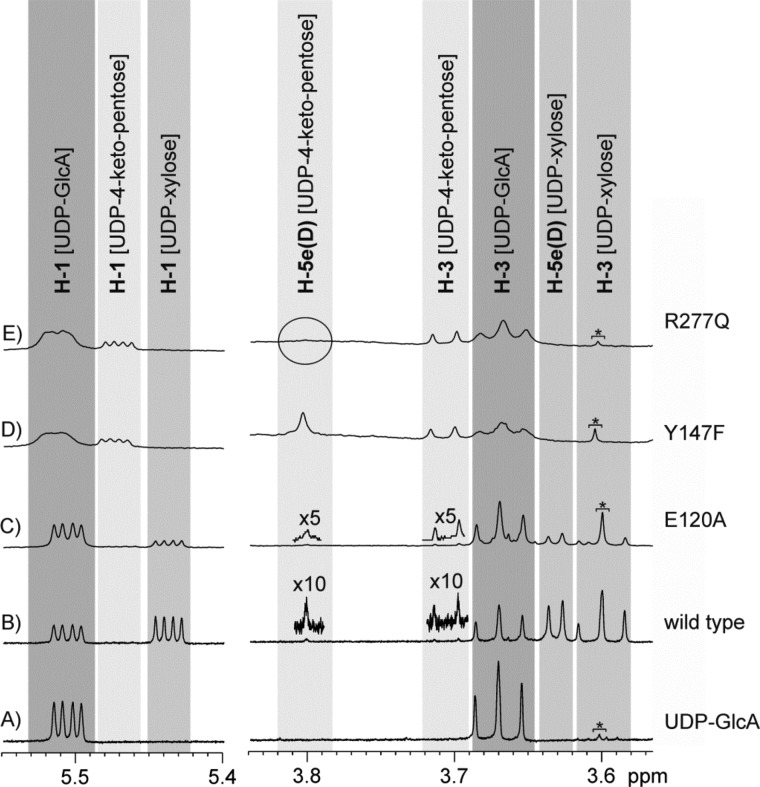FIGURE 3.
Results from in situ NMR experiments with hUXS1. Trace A shows some signals of the substrate UDP-GlcUA at the beginning of the transformations. In trace B, additional signals of the final product UDP-xylose are visible. This product is formed during the wild-type catalyzed reaction and contains one deuterium atom in position H-5ax. A further tiny amount of the UDP-4-keto-pentose is detectable, which also carries a deuterium atom in position H-5ax. Transformations catalyzed by the E120A mutant lead to comparable results, as shown in trace C. Here also mainly UDP-xylose is accumulated, whereas UDP-4-keto-pentose is undetectable or present only in very tiny concentrations, respectively. Transformations catalyzed by the Y147F mutant exclusively accumulate the intermediate UDP-4-keto-pentose with one deuterium atom in position H-5ax (trace D). Transformations with the R277Q mutant (trace E) also lead to the same intermediate, which, however, is deuterated twice in position 5. In none of the transformations have any hints for accumulation of the UDP-4-keto-GlcUA been detected. An impurity (TRIS) causes the additional singlet at 3.605 ppm, which is indicated with an asterisk.

